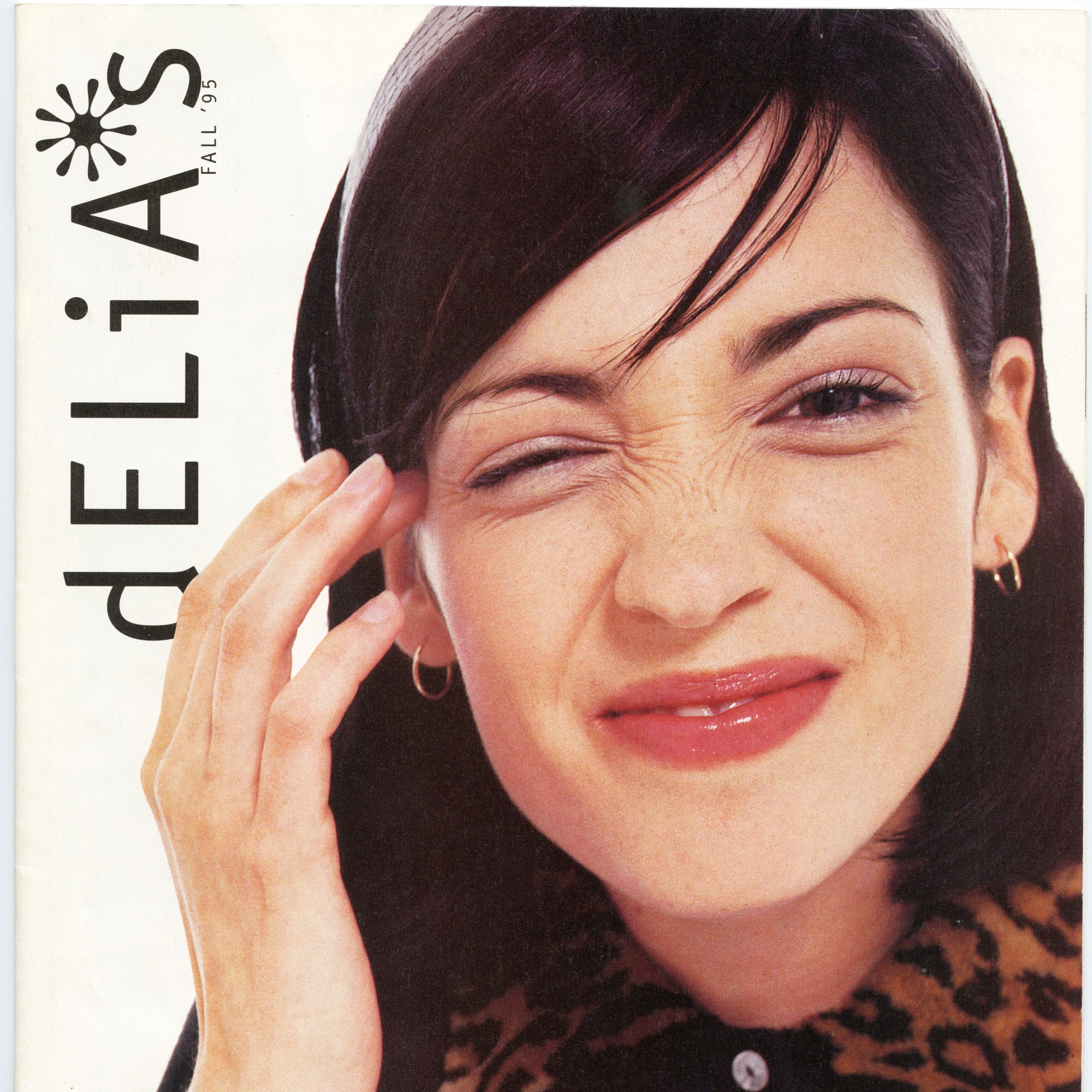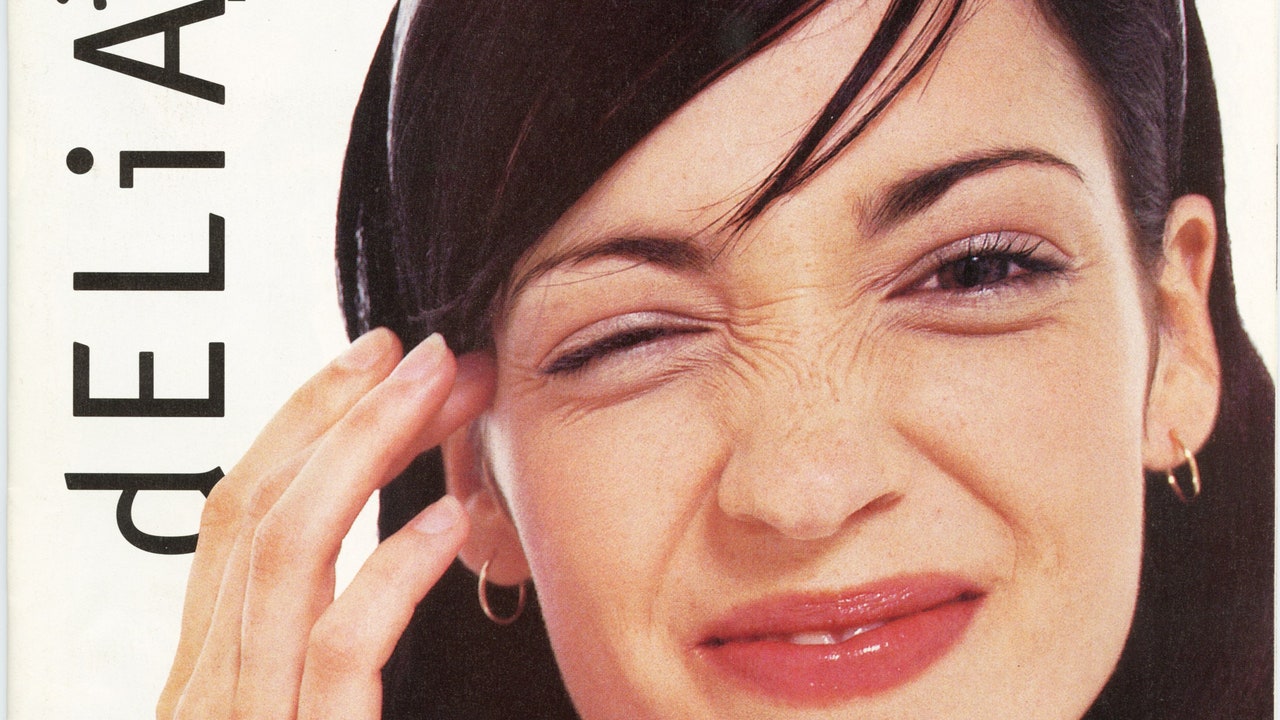Fashion
Growing Up Abroad, the Delia’s Catalog Was My Connection to America
After voting for the first time in-person, one writer unpacks how the wildly popular, alt ‘90s catalog shaped her idea of what American life was….



The community center’s lights turned everyone a bruised green color, and despite the chill, a ceiling fan had been turned on for “air circulation purposes.” We all stood six feet apart, pretending not to notice the large black house fly that landed on each of us in a brazen display of rule-breaking. I was voting early in Massachusetts, standing in line with my husband, waiting to feel the subtle change that would come as I colored in the circle for a new president. Somber faces lent an air of gravity to the occasion, but for me there was an added layer of significance. It was the first time in my life that I had cast my ballot in person.
I come from a long tradition of absentee voters, and watched from a young age as my parents stuffed their own ballots into the embassy’s diplomatic pouch and sent them off to be counted back in the States. It wasn’t until I was approaching my teen years, that I realized people showed up to vote at all. Both my mother and father were career Foreign Service officers, who moved our family to a different country every two years. This made me a “Third Culture Kid” or TCK, a term coined by the American sociologist Ruth Useem, which defines the experience of expatriate children who spend their formative years outside of their passport country, usually due to the profession of their parents.
Though I was born in Florida, it was only three weeks later that I boarded my first plane to Zimbabwe. In Harare, our neighborhood was lined with Jacaranda trees that bent over one another and exploded with purple flowers that rained down a lilac carpet. My parents had to remove their shoes at the door or leave lavender footprints all over the hardwood floors. Over the next few years, we lived in Austria, Ireland, Mexico, Kenya, Bolivia, and Ethiopia. This way of life ended for me when I reached high school and my mother took a hardship post in Bosnia, a country where the sheer volume of leftover landmines meant that dependents were strictly forbidden. Suddenly I was at boarding school in northern Michigan, and America was no longer a far-flung notion.
Growing up, I never felt American. But I was also keenly aware that I would never fully assimilate to the country in which we were presently living, especially when I knew that in only twenty-four months another move was imminent. America was never home, always an idea: an identity I longed to claim but felt totally removed from. As a child, the only significant time I spent in the States was every other summer when we flew back for Home Leave—a requisite vacation meant to reacquaint you with your American roots. As soon as we landed, the first thing I did was load up on teen magazines at the Miami airport. I’d stay up all night reading them like I was cramming for a test, and even took notes in the margins: must see Ten Things I Hate About You; must get a mini backpack. Yet, in spite of my love of YM and Seventeen, there was no better guidebook for the American teenage girl than the Delia’s catalogue.
Fashion
Raekwon Unveils “The Emperor’s New Clothes” With All-Star Lineup

Raekwon, a legendary rapper known for his role in the Wu-Tang Clan, has just announced his long-awaited eighth studio album, titled “The Emperor’s New Clothes,” set to be released through Mass Appeal. Although no singles have been shared yet, the album is already creating a buzz and is highly anticipated this summer. It’s been seven years since Raekwon last released a solo album, and this new project feels more like a grand return than just another release.
He’s teamed up with a mix of familiar faces from the Wu-Tang Clan and some fresh talent in hip-hop. Listeners can look forward to clever lyrics and captivating stories filled with raw emotion. Raekwon has invited his Wu-Tang brothers Ghostface Killah, Method Man, and Inspectah Deck to feature on the album, ensuring a classic blend that fans love. He’s also brought in well-respected artists outside of the Wu-Tang family, like Nas and members of the Griselda collective, Westside Gunn, Benny The Butcher, and Conway The Machine, who are known for their gritty style.
Adding to the variety, singers Stacy Barthe and Marsha Ambrosius will provide soulful vocals to complement Raekwon’s hard-hitting verses. The album’s production features talented names like Swizz Beatz, Nottz, J.U.S.T.I.C.E League, Frank G, and Roadsart, promising a rich, cinematic sound that matches Raekwon’s lyrical skills. Even with such an impressive lineup, there’s still a sense of mystery around the album. There have been no early songs or previews released, just the announcement itself, which builds even more expectation.
But for Raekwon, this is part of his journey. He has always delivered powerful lyrics and relatable street stories without much introduction. The title, The Emperor’s New Clothes, suggests a fresh start and a daring vision that might challenge the current state of rap. With his experienced flow and storytelling still sharp, Raekwon seems prepared to reestablish his place among the top artists in hip-hop.
Fashion
Wendy Williams Makes Stylish Splash At Columbia Supporting Her Designer

In a delightful surprise for fans and fashion enthusiasts, Wendy Williams made a rare appearance at Columbia University on Tuesday, and everyone couldn’t help but notice her. The former talk show host was in high spirits as she showed up to support her longtime friend and fashion designer, Mel Maxi. Wendy looked fantastic in a stylish black-and-white outfit that included a Yankee hat and her trademark flair.
Designed by Maxi himself, her outfit was not just chic but also had a personal touch that highlighted her vibrant personality. In a heartwarming moment recorded on video, Wendy told Maxi, “This is amazing! This was specifically designed for me… this is really hand done.” Wendy came to cheer on Maxi, who was set to give a lecture about fashion design at the prestigious university. Her appearance was a meaningful moment between two creative friends who have supported each other for years. Wendy’s presence emphasized the importance of friendship and collaboration in the creative world.
As she walked by, a nearby fan shouted their love for Wendy, and she instinctively responded with her signature warmth and enthusiasm: “Thank you!” she exclaimed with a big smile. After being away from the spotlight for months, Wendy’s visit was a refreshing change for fans who have missed her lively spirit. There were no fancy events or flashing cameras, just Wendy enjoying the moment, supporting a friend, and reminding us all of the significance of showing up for the people we care about.
-

 Artist Spotlight5 days ago
Artist Spotlight5 days agoHope Easton channels tropical mischief and charm in new single “SexyReady”
-

 Artist Spotlight5 days ago
Artist Spotlight5 days agoSweetCandy! declares self-love and defiance on “UGLY”
-

 Artist Spotlight5 days ago
Artist Spotlight5 days agoBluntBrad Jr. finds calm ambition in the laid-back shine of “It’s All Good”
-

 Artist Spotlight4 days ago
Artist Spotlight4 days agoLana Crow turns challenges into a celebration with “Laugh With You”
-

 Artist Spotlight5 days ago
Artist Spotlight5 days agoLavien drops a heartfelt Afrofusion plea that sticks to the soul with “Nobody”
-

 Artist Spotlight6 days ago
Artist Spotlight6 days agoCircleKSK ignites an anime-metal collision on “UnBreakable Turn” ft. Anya J
-

 Artist Spotlight6 days ago
Artist Spotlight6 days agoRecc explores nostalgia and inner freedom in “Where the Wild thYngs Are”
-

 Artist Spotlight6 days ago
Artist Spotlight6 days agoAnnaBelle Swift delivers gentle hope and gratitude with new single “Heaven Sent”

